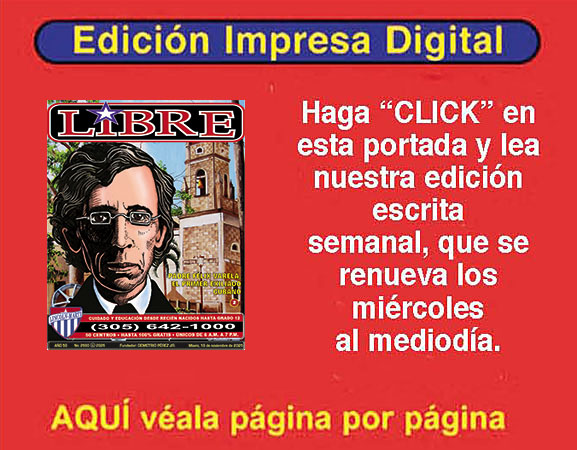Join the author, Néstor T. Carbonell, as he shares a critical analysis of the Castro-Communist regime and explores the challenges and opportunities that will likely arise when freedom finally dawns in Cuba.
CHAPTER 17: The Dawn of Freedom
A New Beginning
When change finally comes to Cuba, what will it look like? Will it look like China or Vietnam, open to state and private capitalism but closed to democracy? Or will it look like Poland, where roundtable talks between the government and the dissident movement (Solidarity) gave rise to a gradual democratic opening? Or will it look like Czechoslovakia, where communism’s stunning collapse, known as the «Velvet Revolution,» brought swift and peaceful transformation? Will it look like Romania’s bloody coup or the Soviet Union’s unraveling, following Gorbachev’s glasnost and perestroika reforms?
It is difficult to predict. But it’s reasonable to assume that the Castro regime’s likely successors (the military-controlled politburo, including the dictator’s proteges and designated family members) will try to retain as much authoritarian power and perks as possible and forestall or delay systemic reforms.
Continuity with minor changes may be achievable, but not for long, given the conditions of the waning regime—its foundations eroded, its resources wasted, and its vitality exhausted. The revolutionary elan spawned by the Castro brothers in their heyday has largely evanesced. What will likely subsist is the raw force and greed of factions at the helm, struggling to remain in power without any inspiring goals to proclaim or cause to defend. Not the best recipe for resurgence.
Absent the ability to cut the Castro Gordian knot, what will it take to liberalize the captive island, subjugated for more than half a century by Communist oppression? Probably a combination of top-down and bottom-up pressure. As fear subsides, frustration grows, and protests escalate, the airtight totalitarian apparatus will likely splinter or crack. The army then will have no choice but to yield to the clamor for fundamental change led by young reformists within the government and by an invigorated dissident movement backed by large swaths of civil society.
The popular outbreak, however, could take time to gain traction since it may lack the strong external boost that spurred post-Communist transitions in Central and Eastern Europe. However, it is encouraging to note the extraordinary backing that the United States, Canada, and numerous Latin American and European countries have given the anti-Maduro democratic forces in Venezuela. This could set a positive precedent for Cuba.
Tyranny will eventually end on the captive island, but liberty under the rule of law will not spring up overnight. The journey from totalitarianism and a command economy to democracy and free enterprise may be staggered, rocky, and contentious.
But those leading the transition will not have to improvise or start from scratch. Drawing on the experiences of Central and Eastern Europe and other regions, jurists, economists, and sociologists from the Cuban American community and the island, as well as US government officials and academics, already have worked on blueprints that could help address the roadblocks that may arise.
Challenges Ahead
One of the biggest initial challenges that post-Communist Cuba will face is the restoration of law and order while fostering national unity and reconciliation. To achieve that, a broad-based provisional government will have to be formed, possibly including noncontroversial representatives of the prior regime, along with leaders of the dissid movement, civil society, and the Cuban diaspora.
Following the release of all political prisoners and the dismantle of the island’s repressive apparatus, those accused of major crime should be brought to justice and tried, with due process of law by a new, not politicized supreme court. But the purge of those who actively collaborated with the Communist regime (known as «lustration» in Central and Eastern Europe) should not become a witch-hunt driven by personal vendettas. In the interest of healing and reconciliation lustration, if applied in Cuba, should be limited in scope, duration, and severity.
A constitutional framework, not cast in the Castro-Communist mold, will be needed during the transition before free and multiparty elections are held. Such temporary charter, if based on the applicable provisions of Cuba´s last democratic constitution, promulgated in 1940, would carry legitimacy and provide legal guarantees for all. That constitution became the leitmotiv of the struggle against the Batista dictatorship, and its principles embedded in its bill of rights are today espoused by most of the prominent leaders of the dissident movement and the diaspora.
Turning to economic challenges, the transition government will have to renegotiate Cuba’s stifling foreign debt and seek urgent relief from the World Bank, the IMF, USAID, and other institutions. It has been estimated that the island will need to stabilize the economy and kick off the recovery anywhere from $500 million to $2.5 billion a year in emergency aid for three to five years.
Well-thought-out measures will be required to unify the exchange rates, deregulate prices, reduce excessive taxes and trade barriers, and gradually phase out unsustainable government subsidies. And to stimulate investments, private property and contractual rights will have to be legally protected against confiscations and arbitrary decrees.
At the same time, the interim government should stave off any extreme nationalistic or protectionist tendency that would shun or discourage reputable foreign investors willing and able to bring to Cuba much-needed capital and technical know-how. Lech Walesa, the first directly elected president of post-Communist Poland, was on the right track when he reportedly declared, «I want the US to send me its best generals: General Motors, General Electric, and General Dynamics.»
Privatization will be the linchpin of Cuba’s economic recovery, disgorging most of the assets gobbled up and squandered by the Castro regime. The transition government will have to decide which of two basic models to follow: the big bang or shock therapy, involving an accelerated top-down privatization process (as pursued in Poland) or a phased bottom-up approach, leaving privatization of the largest government enterprises for the final stage. Most independent Cuban economists seem to favor the gradual process, along with a safety net to assuage the impact on the displaced and unemployed.
The transition government should be prepared to counter possible attempts to co-opt the privatization process by corrupt officials of the Castro regime, trying to replicate the plunder of the enriched Russian oligarchs or the pillage of the crooked Nicaraguan Sandinistas.
Another delicate challenge that will arise is how to resolve the outstanding claims of rightful owners of businesses and properties confiscated by the Castro regime. Since the transition government will not have the funds to provide the claimants with monetary compensation, resolution will likely call for restitution of the confiscated property, or of one similar in value where feasible, or payment with government bonds or privatization credits known as «vouchers.» Both approaches should entail a commitment to reinvest in Cuba.
The task of verifying titles, estimating the value of the confiscated properties, and determining the rights of competing claimants is fraught with complexity and prone to controversy. It behooves the transition government to study what worked and what didn’t in Central and Eastern Europe.
Cuban emigres and their descendants—viciously dubbed by Castro the «Miami mafia» and accused by him of plotting to oust the islanders from their homes—ought to tread carefully when exercising their rights. Otherwise, wide swaths of the local population could turn against them, as occurred in East Germany during the reunification of the country. Returning Cubans should not be perceived as insensitive overlords taking over properties and displacing local residents. Instead of evincing greed to recover, they should exude zeal to rebuild.
The Shattered Infrastructure
Cuba’s recovery will require the rebuilding of its shattered infrastructure, starting with housing. The island faces today an acute housing crisis. Too many Cubans live in dangerous, overcrowded conditions with entire families crammed in one-room apartments or lofts. Deferred maintenance and scant materials and financing has created perilous electrical, gas, and structural issues. Dilapidated buildings frequently collapse, particularly in Old Havana. Experts estimate that Cuba is lacking adequate housing by almost 1 million units.
Another major infrastructure emergency is insufficient potable water. The Pan American Health Organization estimates that only 62 percent of Cubans have reasonable access to disinfected water. To complicate matters, sewage treatment is alarmingly inadequate. Reliable sources indicate that «in the entire country, there are only five municipal wastewater plants, and an extremely low level of the sewage effluent has treatment.»
An efficient transportation system—by air, sea, and land—is a critical element of infrastructure that would spur the development of tourism, employment, and overall economic growth in a post-Castro Cuba. This will require upgrading Cuba’s seven principal international airports and providing its ten major ports with modern container and cruise terminals, as well as links to rail, trucking, barge, and pipeline operations. High on the priority list is also the rebuilding of deteriorated roads and the modernization of Cuba’s railway system.
Digitalizing the island’s antiquated telecom system is an urgent must despite recent progress, Cuba still has one of the region’s lowest density of mobile phones, computers, and internet usage. This is due, in part to Castro’s fear that their totalitarian regime could be undermined through the connectivity of the Web and social media.
Untapped
Potential
As a free Cuba rebuilds its infrastructure, upgrades professional services, and opens its economy with adequate legal safeguards, investors will flock to develop the island’s potential in a number of areas, including: tourism; agro-industries; mining, minerals and petroleum; biotechnology; and pharmaceuticals.
Tourism
Not surprisingly, at the top of the list is tourism. The Castro regime, mainly in partnership with European hospitality companies, stepped up construction of new hotels, mostly in Havana and beach areas and keys, like Varadero, Cayo Coco, and Cayo Largo. But owing to inadequate services and facilities (with a few exceptions), Cuba has not been able to attract the high-end, heavy-spending, repeat tourist market. Still lacking are five-star resort hotels with golf courses and villas for rent or sale.
The opportunity is there for investors in a free Cuba to take tourism to a much higher level. After all, Cuba is an archipelago of more than thirty-five hundred islands, islets, and keys, and only a fraction of its hundreds of pristine blue water beaches have been developed. Its coral reefs and diverse fisheries, particularly in the spectacular diving spot of Jardines de la Reina—often called the Galapagos of the Caribbean—have attracted both naturalists and fishing enthusiasts from all over the world.














0 comentarios